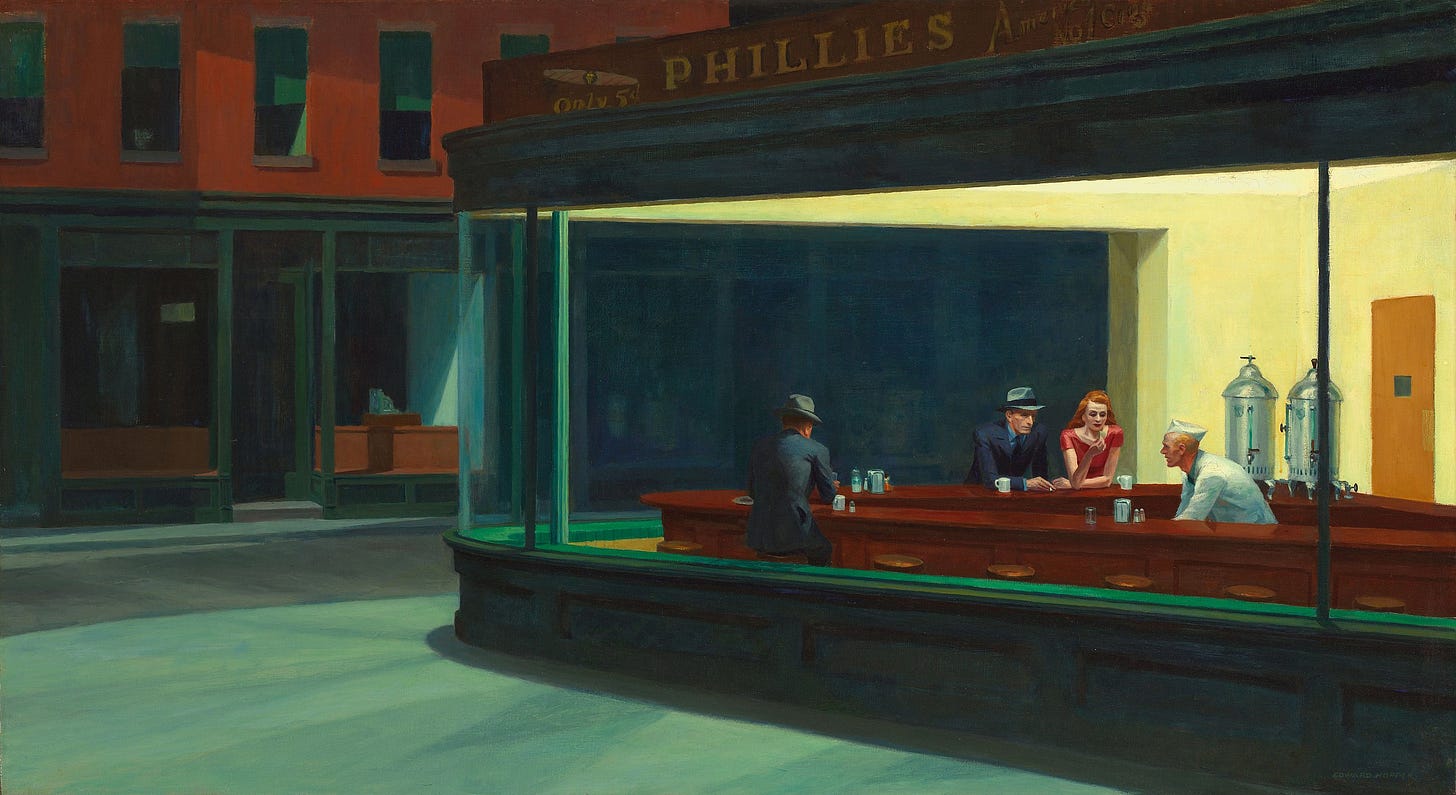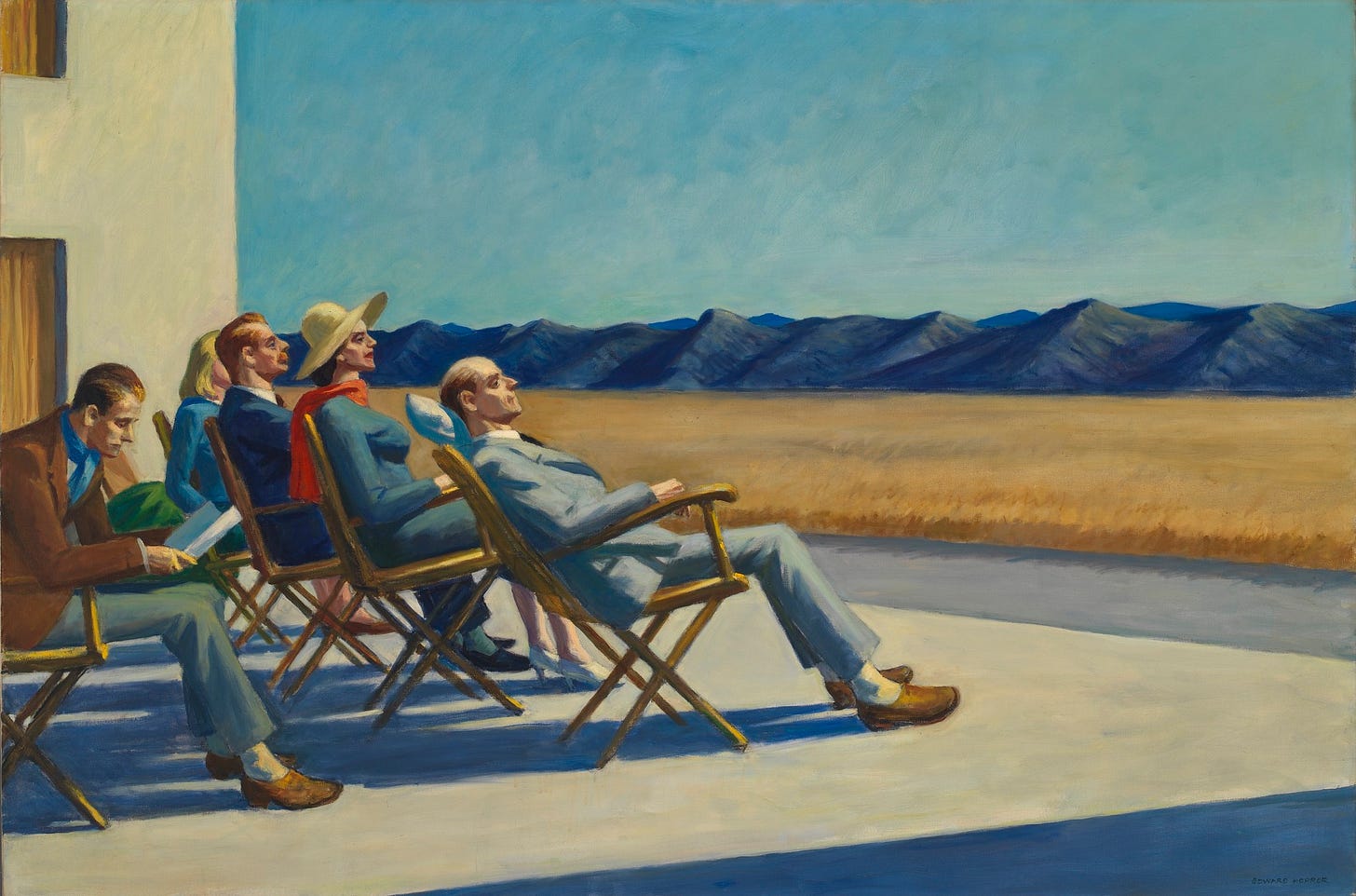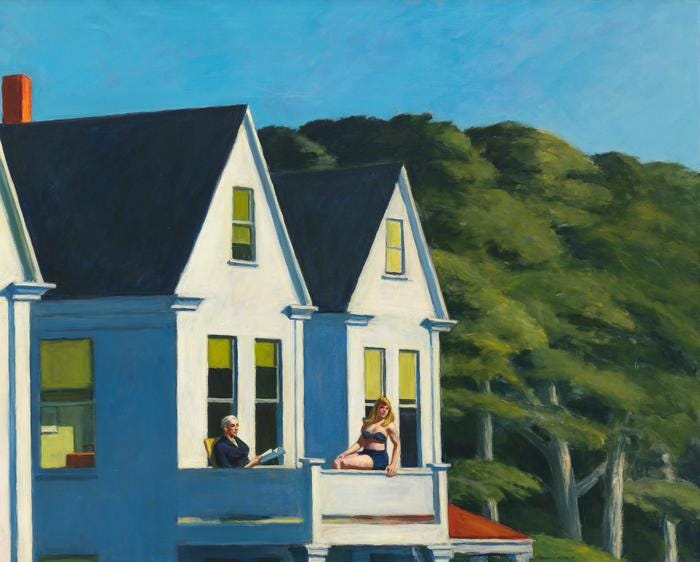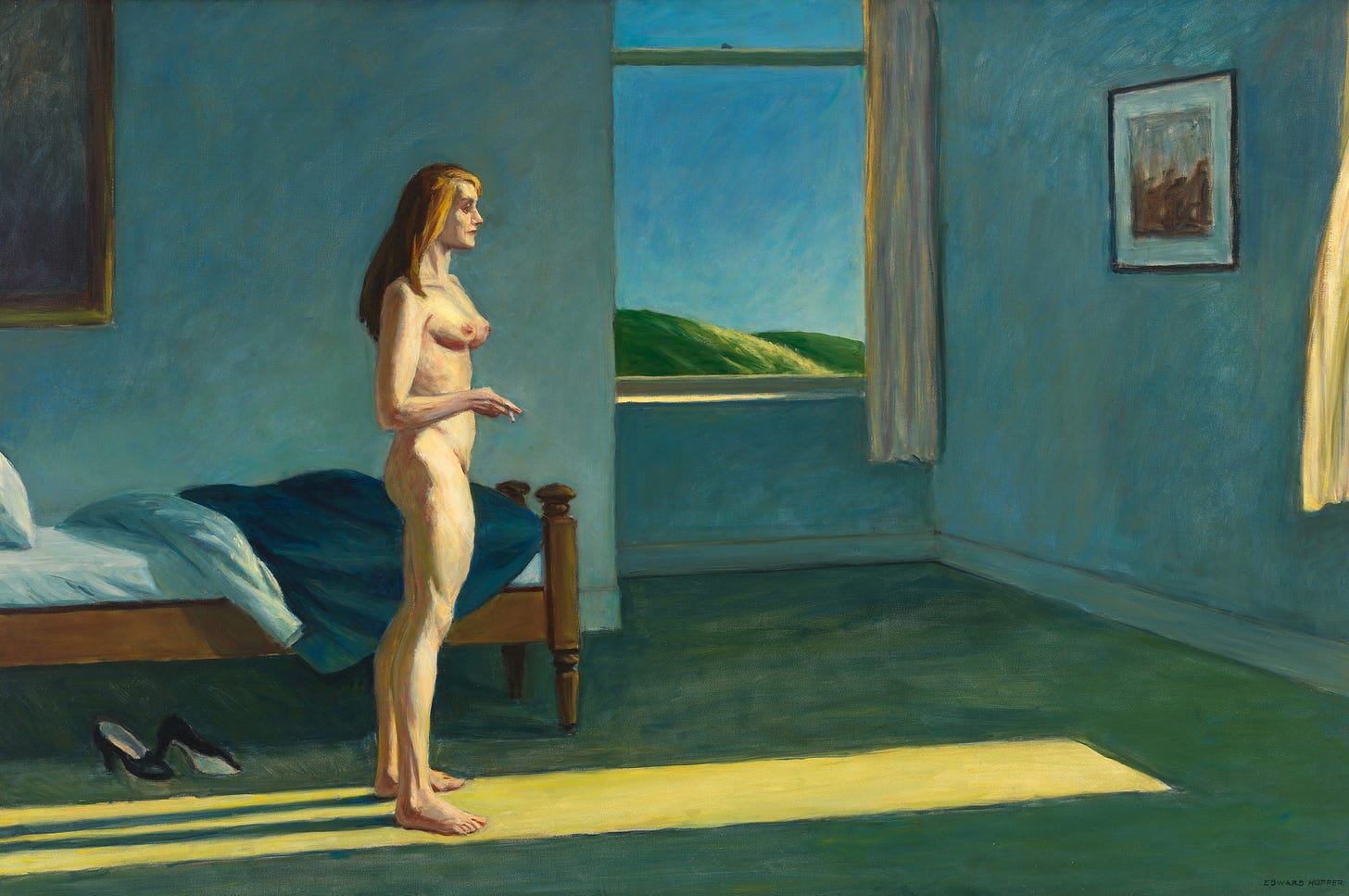Why Do So Many Photographers Love Edward Hopper?
He's an iconic American artist, but photographers in particular venerate his work.
I’m not especially knowledgeable about art. Pictorial art, I mean – painting. I don’t know my Picassos from my Van Goughs, and I certainly don’t know my Monets from my Manets. (I don’t know anything about sculpture, either, but I don’t feel like that’s quite so strange.) The closest thing I have to an art collection is a complete set of the volume 3 run of Silver Surfer comic books.
I do, nevertheless, have a favorite pictorial artist – the American painter Edward Hopper (1882-1967). Even if you’re as aesthetically illiterate as I am, you probably know Hopper’s most famous painting, Nighthawks (1942). It’s this one:
I love this painting so much that I visited the Art Institute of Chicago to admire the original in person, and I’ve got a giant canvas print of it hanging on the wall. (And a pair of socks and a fridge magnet from the museum souvenir shop.) It’s also wholly unsurprising that I’m so captivated by Hopper’s work, because I’m a photographer, and Hopper was, to me anyway, a photographer who simply preferred pigment and paper to photons and film.
Let me explain.
First of all, Hopper was a realist – his art was strictly representational. (That’s fancy art-speak for his paintings looked like the things they were paintings of.) He had quite a distaste for abstract art, in fact, and he found it unnerving that people were praising both his art and that of Jackson Pollock, the American abstract expressionist, who was a contemporary of Hopper’s. (This makes me love Hopper even more, as someone who has struggled to appreciate non-representational art.) Photography, I think, is a predominantly representational artform. It is possible, of course, to be a bona fide non-representational (i.e. abstract) photographic artist, but this is a much more niche genre in photography than in pictorial art. Hopper’s work clearly parallels photography in the sense that both are attempting to depict a scene that is generally faithful to our observable reality.
Hopper’s works eschew any kind of otherworldliness or whimsy; rather, he pays close attention to perspective, lines and angles, light and shadow - often intending to capture a moment at a specific time of day. He routinely sketched out his paintings with Conté and paper beforehand, often going through multiple drafts with notes about minute details. He used his wife Jo as a model for scenes prominently depicting human figures. When he painted Victorian houses, he sought the angles that revealed the complexity of the building’s architecture.
Photography, by definition, precludes the capturing of an image that does not already exist in the physical world; Hopper, unbound by that constraint, was nevertheless punctilious in representing the images that emerged from the interplay between his inner self and the outer world. Not to put too fine a point on it, but photographers love Hopper’s work because so many of his paintings could be photographs.
Even more salient (to photographers) than the generally representational nature of Hopper’s work is his careful attention to the realistic portrayal of light and shadow. It’s clear that Hopper thought about light in his scenes in much the same way that photographers do. Bright summer sunlight, for example, features prominently in several of his more famous works: illuminating two figures and a white façade in Second Story Sunlight (1960), warming the faces of seated figures in People in the Sun (1960), and starkly highlighting a solitary female figure in Morning in a City (1942), Morning Sun (1952), and A Woman in the Sun (1961). His nighttime and indoor scenes (like Nighthawks above) reveal his careful attention to the placement of light and its effect on the mood of the scene - contrast Soir Bleu (1914) with Moonlight Interior (1923).
Finally, Hopper’s images often tell a story in a single frame, much like street photography does. Voyeuristic glimpses through windows invite our interpretation in Room in New York (1932), Office in a Small City (1953), and August in the City (1945). Many of his works feature solitary figures, evoking a sense of loneliness, restlessness, and separation. In interviews, Hopper was adamant that he identified very personally with his art, insisting that his paintings always convey, if not in the clearest manner to the viewer, the state of his mind at the time. His art, then, was overwhelmingly personal and private even as he revealed it to the world.
Speaking personally, I find that the most compelling thing about Hopper’s paintings is the fact that they can be recreated, however imperfectly, as photographs. I have, for example, consciously reproduced Hopper’s collection of early nude female sketches with a female model, which was a fun project. I’d love to recreate other works of his as photographs, or do a series of images overtly inspired by some aspect of his work.
What about you? Were you already familiar with Hopper? Any other photographers out there who have been as inspired and captivated by his work as I have? Are there other pictorial artists whose work is also great for photographers? I’d love to hear your perspectives.









I love Nighthawks! I gasped when saw it at the Art Institute. I hadn’t known it would be there. Great write up!
I would be interested to see you images in the style of Hopper.
I would recommend you have a look at the work of the Dutch artist Vemeer, you might find it interesting. Are you familiar with the Scottish painter Jack Vetriano? John Wright, another scot but a photographer - johnwrightphoto.com produces some great work too. Do let me know what you think of their work.